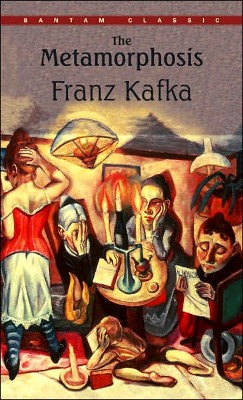Wednesday, January 6, 2016
VIII. La Zone Sensible [de la Balance]
VIII. La Zone Sensible [de la Balance]
Our progressed moon in the ninth band, after which it is named, the Phoebe
Ring among these velvet arranged titanium alloy variations of the Protopalatial bees—
Quaking from tinkles of lightning of the solstice weather occurring once every three decades,
And having decided not to undertake the mantids of Ciraquito’s predecessors, while having secured
Terrestrial metals—The form in its melt weight, there for its disproven biocompatibility, seizes
Upon contact with other surfaces, as the recollected mimosa by the brush by a fugitive hand.
24 July 2015
Subscribe to:
Post Comments (Atom)






3 comments:
"In the Voyeur's category of 'honest, but unhappy people,' a great majority of his subjects were out-of-town married couples who, during their brief stay at the Manor House Motel, so filled his ears with their complaints or indications of long-term marital stress that he constantly reminded himself of how lucky he was to have Donna as a wife.
[...] he had an adoring and faithful spouse, an in-house nurse, a coconspirator with regard to his prying propensities, a prurient presence in the attic when she was off duty from the hospital, a trustworthy manager of their family finances, a loving mother of two children, and, also worthy of mention, his private secretary and scribe whenever he was too tired or bored to put on paper some of the tedious scenes and situations he witnessed through the slats.
[...]
Since Gerald Foos was frequently carried away by fantasies of his scientific status, imagining Donna and himself as white-coated colleagues of the renowned couple that ran the Masters & Johnson Institute in St. Louis, his written report often conveyed the professional tone of a sexual therapist or marriage counselor, particularly in the final sentences that formed his 'Conclusion'(123-4)."
—Gay Talese's The Voyeur's Motel (2016)
"They're only a bit of a cell, after all. Why would electrical fields in mitochondria, generated by flux through the Krebs cycle, equate to strivings of the self?
To understand why — why the language of mitochondrial electrical fields become bound to the ephemeral states of cells - you need to know that mitochondria were bacteria once. They were engulfed by other cells nearly two billion years ago. I explored the extraordinary ramifications of that relationship in The Vital Question. All we need to know right now is that the electrical potential on the mitochondrial membranes inside our own cells is the same as the charge on the plasma membrane of bacteria — the membrane bounding the cell, which separates and links the self that is a bacterium with the outside world. For the bacterial self, the plasma membrane is the threshold of the known universe. Everything else is just shadow (281)."
— Nick Lane's Transformer: The Deep Chemistry of Life and Death (2022)
"[...] reproductive cancer rates have multiplied in recent generations as birth control and affluence has spread.
The other key pathway that links chronic positive energy balance with reproductive cancers among women is through fat. [...] fat cells, which collectively act as a sort of endocrine organ to synthesize estrogen that is released into the bloodstream. Obese women can have 40 percent higher estrogen levels than nonoverweight women. As a result, rates of reproductive tissue cancers are strongly correlated with obesity after menopause. In a study of more than 85,000 American women who were postmenopausal, those who were obese had a 2.5 times great risk of developing breast cancer than those who were not overweight. These relationships explain why rising rates of many reproductive cancers closely mirror rising rates of obesity (287)."
—Daniel Lieberman's The Story of the Human Body (2013)
"A rotor cloud forms when turbulence leads some winds to blow back toward the mountain. As the name suggests, this cloud is the visible part of a rotating vortex of wind on the lee side of the high ground. It can lead to a surprising array of shapes and forms, often a warped cumulus, depending on which parts of the rotating wind are cooled enough to cause condensation.
If you see a peculiarly shaped cloud in a mountainous region, look from the cloud in the direction the winds are blowing and you should be able to spot the summit that created the rotating wind. Pilots are expected to spot these clouds: They are a sign of winds that are dangerous for aircraft (164)."
—Tristan Gooley's The Secret World of Weather (2021)
"Plants track the season by measuring the hours of darkness each night using a molecular timer that is set running each sunset. This allows them to trigger flowering only when the chances of pollination are the highest.
'Short-day' plants, such as Christmas cactus (Schlumbergera), will only flower in fall and winter, when the darkness timer runs for at least 13 hours. 'Long-day' plants, such as cape primrose (Streptocarpus), flower exclusively in brighter months, when there are fewer than 10 hours of darkness. Other plants, such as Impatiens, are 'day-neutral' and do not use day length as a flowering cue, so they can flower from spring to fall in favorable conditions (142)."
—Stuart Farrimond's The Science of Gardening (2023)
"The country was by no means new to Voss, who had returned by land from Moreton Bay and the North, yet, on this significant occasion, he observed all things as if for the first time. It was a gentle, healing landscape in those parts. So was he was looking about him with contented eye, drinking deep draughts of a most simple medicine. Sometimes they would leaves the road, from the stones of which their horses' feet had been striking little angry sparksm and take short cuts instead along the bush tracks, walking on leaves and silence. It was not the volcanic silence of solitary travel through infinity. The German had experienced this and had been exhausted by it, winding deeper into himself, into blacker thickets of thorns. Through this bushland, men had already blazed a way. Pale scars showed in the sides of the hairy trees. Voss was merely following now, and could almost have accepted this solution as the only desirable one (124)."
—Patrick White's Voss (1957)
https://succulentsbox.com/blogs/blog/how-to-make-christmas-cactus-bloom-several-times-a-year
Post a Comment